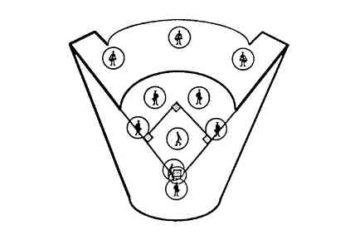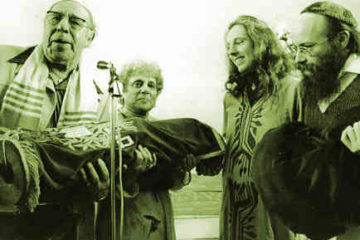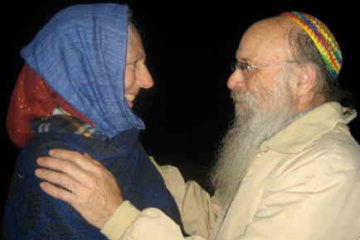In the mid-70s, I lived on Fifteenth Street above Castro in San Francisco, a long, though manageable walk from the House of Love and Prayer on Ninth Avenue. One Shabbat morning, when Shlomo was in town, I left my apartment in high anticipation. To daven with Shlomo was a rare treat, and I believed this meeting would be higher than usual, indeed, that it held messianic potential.
I wore my olive-drab army blanket, held in place at my throat with a safety pin and trailing behind me like a cape. A couple of moth holes completed the decorations. I strode eagerly forward, up and down the Buena Vista hills intervening between me and the House, until I came to the edge of Golden Gate Park. There my progress was arrested by a cardboard box sitting partway open in the grass.
Now I have to go back and tell you that during my last year in college, at Lafayette, in Easton, Pennsylvania, my friends Bob and Lowell and I – and sometimes Steve or Eric – would go to a donut maker’s side door at about 4 in the morning and buy warm glazed donuts from him for four cents apiece. (They were five cents apiece in the daytime at the bakery.) I was never a donut kid; my parents never bought that particular kind of confection, so this was my first real exposure – and what a great way to get introduced!
Subsequently, I learned about macrobiotics, health food, organic food, began to garden, to grow corn, carrots, radishes, rutabaga, squash, sunflowers, onions, tomatoes, and other crops. But now I was back on the street, engaged in a spiritual quest, going toward the House to daven with Shlomo on Shabbat morning, and was stopped by the sight of this red cardboard bakery box, with the lid partway up and grease stains visible from the outside – and inside were a dozen chocolate old-fashioned donuts.
Now I had learned about real donuts from glazed, the hard-edged flakes of sugar melting in your mouth, the puffy dough, the sugar rush, and had then expanded my range to that other, cakier texture possessed by old-fashioneds – but with a chocolate icing! This was the ultimate in donut decadence.
I crouched down in the grass next to the box, opened the lid, and peered inside. Repeated admonitions from my mother ran through my head: not to eat food whose provenance I did not know, especially of doubtful kashrut. I also knew I couldn’t carry it on Shabbat – unless I wore it, which, with a donut, is not inconceivable. Hygienic considerations also entered in. Why was it lying open in the grass? Who left it there? How long ago? Had the insects discovered it yet? Was it poisoned? Had it been dosed?
Well, it looked pretty fresh. There were no ants around. So, finally – what would you do? – I broke off one piece and put it in my mouth. I chewed softly while the wonderful flavors permeated my body. One bite was not enough. I ate the whole donut, then a second one, and part of a third. Then I got up from my crouch and moved on.
Now that I had eaten, I did not feel quite as driven toward my destination, quite as sharp, quite as focused. I tried to capture some of my former energy, but it did not feel nearly the same as before. I still wanted to go, but the Messianic dimension was missing. I remembered the story of the Arizal and his disciples in Tzfat.
In the middle of an ecstatic prayer experience, the Ari had suddenly announced, “Now! We must go up to Jerusalem! The Messiah is waiting for us there.” His disciples wanted to go, too, but first they begged leave to say farewell to their wives and children. The spell was broken, and the Ari mourned. He said, sorrowfully, “If only you had been entirely willing to come with me at that moment, together we could have brought Mashiach.” I wondered if I had forfeited that chance.
When I reached the House, I walked swiftly through the open door. Shlomo was already davening across the room, his tallis pulled over his head like a cowl. He caught my glance, and I saw an expression cross his face of mingled disappointment and regret. Shlomo often used to say, “What do we know?” especially with regard to the deeds of another. He was always inclined to grant the benefit of the doubt where human behavior was concerned. Who could know what really motivated an individual? What were a person’s true intentions? What would be the long-term consequences of a questionable action? What do we know?
But as I looked at him across the room and felt the weight of my teacher’s misgivings, I wondered how much of what I had gone through was already known to him, how much of the ESP of the Baal Shem or the Chozeh of Lublin he possessed, and I asked myself, “What does he know?”
This story first appeared in Kol Chevra


